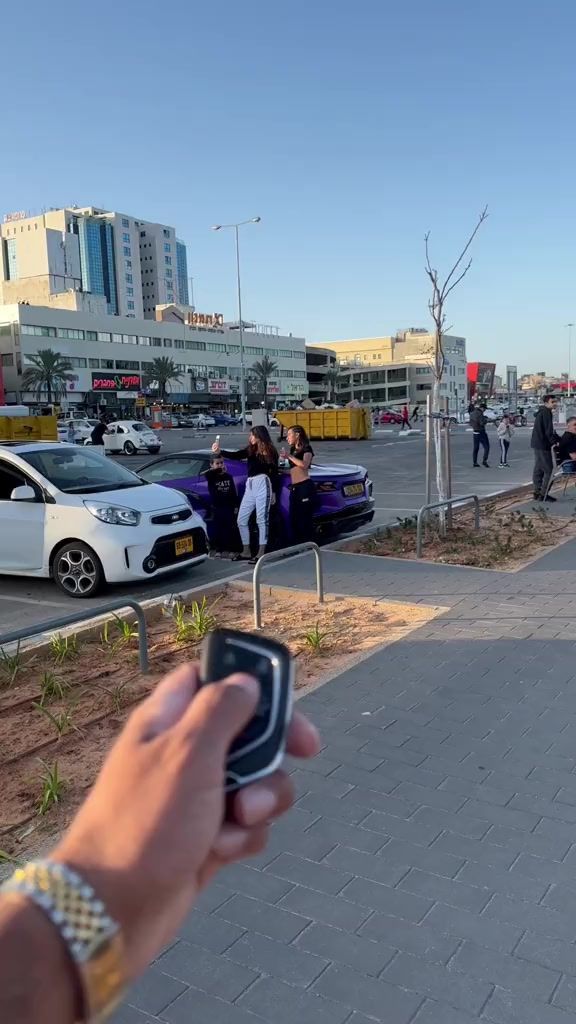Unspoken rule traveling in Japan. You may know that in general, Japanese culture, there’s a lot of kind of you need context clues to figure things out. People don’t just outright say a lot of things. That’s just the culture. That’s how it is. And with that, there are many, many, many unspoken rules about society here. Culture living here, traveling here, etc. So today I came up with a list of 16 different kind of unspoken rules.
Some are just rules that you need to know when you’re traveling in Japan. I’m not going to get to in-depth on the things you need to like live here. These are more travel focused ones, survival. If we went into all the unspoken rules about living here this video would be an hour long. So the rules I’ve come up with, a lot of them are going to apply, especially to people who live in cultures that are very different to Japan’s.
Like, I’m from America, so a lot of these are going to be new or different for Americans, especially because that’s my context I’m coming from. But in general, I think there’s a lot here. There’s going to be something for everyone, I hope. If you’re new here, welcome. My name is Allison, and I have been living in Japan for almost five years now.
Wow. I have traveled the country extensively ish. I think I’m at around 30 prefectures now. I’ve lived in the countryside. I’ve lived in Tokyo. I’ve done a lot of stuff. So with that being said, let’s jump right into it. Unspoken rules you need to know when you are traveling in Japan. Some of these might be a little bit more basic than others, but I’m trying to be diverse.
-
People reserve seats with their belongings. It’s what you do. You’re kind of expected to do it, actually. So by that I mean, like when you go into a Starbucks, for example, you’re always basically going to want to first go to the seat and put something at the seat to reserve it while you order your food. A lot of restaurants operate like this.

Subtle, but a lot. And you can just put like your washcloth, handkerchief, thing, umbrella, just anything really, or even your whole bag. It’s just it’s very safe. No one’s going to take it, but you do need to reserve the seat with something usually. So if you do see a table that looks empty, but there’s like a wash cloth on it, it’s reserved.
Don’t sit there. This isn’t really an unspoken rule, but on that note, do carry a wash cloth if you’re traveling in Japan or like a handkerchief kind of thing. A lot of public restrooms are not going to have like paper towels or hand dryers. That’s not one of the rules. That’s just extra tip.
-
When taking trains, be very mindful of your manners. So many foreign Americans or as I see, they’ll speak really loudly on the train. You can talk on the train. I’m not saying you can’t talk, but do it. You know, little, little voice. And maybe you’ll be on a train that is dead silent in that case. Kind of whisper voice. Depends on the train. There are also other manners you should be mindful of, like when you’re boarding the train for them.
Two lines to enter first and let the people out before you enter, yield your seat to the elderly, pregnant, disabled, et cetera. If you’re riding a crowded train, put your backpack in front of you not to prevent thievery, but just to give more space to the people around you in the train.
-
In general, be careful not to talk too loudly or draw too much attention to yourself in public. A big theme of this list is to be quiet. Again, I don’t mean you can’t talk. I just mean use your inside voices. No yelling, please.
-
People in Japan may not say no to you directly when they mean no. Outright saying no is kind of rude here in a lot of cases. So people might say instead like, oh, it’s kind of difficult or I don’t know. Or they’ll just kind of like suck air in their teeth. That means no. So basically, if you ask permission or for something and they look uncomfortable, it probably means no.
-
When you cough or sneeze, please cover your mouth with your arm or something. This doesn’t just go for COVID times. This goes for all the time. I know this is actually kind of different by a lot of different countries. So in Japan, cover. And if you are sick, wear a mask. Especially right now, please.
-
You’ve probably heard this before, but you need to remove your shoes when you enter like a Japanese house. But this doesn’t just stop at houses because you’re probably thinking, well, why would I go to a Japanese house? You also may need to remove them at like temples, historical sites, and even restaurants.
Not all restaurants, mostly just like Japanese style ones. So do bring shoes that you can easily slip on and off. I’ve traveled before with someone who wore like the Doc Martens, the lace up all the way. Not that. Let’s leave that at home. However, bring socks even in summer. If you’re wearing sandals that’s fine, but keep an extra pair of socks in your bag. Barefoot, like no. And a lot of temples and like historical places actually will require you to wear socks. They’re not going to let you in if you’re not. So do be careful of that. If you don’t have socks, you could just go to the convenience store and buy some.
-
Americans, tipping is not accepted in Japan. Don’t tip here. No one. No tipping. I mean, no. I don’t care how good of a service they provided you, tipping is like insulting in many cases at restaurants. Anything. Just don’t tip. Don’t think you need to tip. There may be a few, few, few exceptions, like maybe like a tour guide who’s like not Japanese, that kind of thing. But really in general, you don’t need to tip. So rejoice, you can save a lot of money.
-
It’s considered rude to eat or drink while you’re walking in public. This is one I also see online a lot. It’s kind of true, but I think it’s kind of changing. Maybe 20 years ago this would have been different, but nowadays I think drinking especially is a lot more common.
Like with Starbucks and things. You know, just having a coffee in your hand while you’re walking, that’s a lot more common now, at least in Tokyo and stuff. But I would say for food, it is rude if you try to eat and walk depending on the food and where you are. Like if you’re in Asakusa with all the food stalls or like you’re at a festival, you can eat and walk. Or I mean, come on, should you be eating like an egg sandwich while walking around? No. If it’s like a skewer or something, then maybe. But in general, I’d say rather than walk, even in like Asakusa places, rather than walking, it’s more common, more accepted to just kind of stand in one place and eat it and then go back to the store and throw your garbage away there.
-
When you are paying in cash, you put your money into the little usually a blue tray that the cashier will kind of push out. You don’t hand it directly unless there’s no tray. Also, when you’re paying at like a restaurant or things, a lot of the time they’re going to give you like your receipt or not even a receipt, like just the food that you ordered on a piece of paper and you’re going to bring that to the cashier to pay. This is pretty common in Japan.
It’s not all restaurants, but it’s common, so don’t expect to pay at your table in most places. Also on that note, do bring cash. Cashless did become a lot more common, a lot more accepted during COVID. However, a lot of stores, a lot of restaurants still only accept cash. Even in Tokyo. You don’t want to be caught without cash or a way to pay. So do always have money on you at all times.
-
Don’t touch taxi doors. Taxi doors in Japan are basically all automatic, like the driver will push a button and the door will open and close. So don’t touch it. They don’t like it when you touch it because they can’t kind of confirm that the door has been closed correctly. I know it is hard not to touch it, but don’t touch it. Just wait. They will open the door for you.

-
You’re going to have to carry trash around with you. Public garbage cans are kind of rare here, especially lately they’ve been decreasing. Really, the only places you might find one is at some train stations, JR ones, and then convenience stores. But a lot of convenience stores actually might not have garbage cans if you’re in like a tourist area, or they might be pretty strict with like you can only throw away what you bought there in the garbage can. So just be prepared.
-
Be careful about taking photos. Privacy laws are pretty strict in Japan compared to like America at least. So if you like take like a straight on shot of a stranger and you like want to upload it — it’s not allowed. You shouldn’t do that. Like where the stranger is clearly identifiable in the focus. And a lot of stores and even restaurants are going to restrict photography. They’re usually going to have like a sign out in front, like with a camera that just says like, no — you know, like crossed out. So be careful. I’m not saying you can’t take photos. Of course you can take photos a lot of places, just be careful with what you’re doing and who you’re taking the photo of.
-
Many places, restaurants in Japan, they’re not going to alter the menu for you. Even Starbucks. So forget the custom order things — it’s not going to happen. They’re not going to do it. If anything, Starbucks is like the most flexible and they have like a set amount of things they will change for you or customize, but they’re not going to do it like in America. Even restaurants — if you try to like order a hamburger, for example, some places are not going to like, they’re not going to take off the tomato if you ask for it. They’re not going to replace it with pickles or something. Some places will, but a lot are not. Especially if it’s a more complicated dish or you’re asking for something like not in the sauce or something. It’s just not going to happen. I will say though that fancier places in general will alter the menu for you, like if you say you can’t eat seafood, for example — as long as you request it in advance, like say you made a reservation.
-
Really quick — Japan loves lines. The people line up for everything here. Very orderly. Don’t cut the line. Don’t try to break the line. Don’t try to skip the line, please. I know some countries like lines aren’t really respected, I guess, but here they are super respected.
-
Stand on the left side of the escalator in most of the country, like in Tokyo. However, like in Osaka, Kyoto, you’re going to stand on the right side. When in doubt, follow what other people are doing. And this also goes not just for escalators, but like when walking on the street. A lot of the times you’re probably going to see people gravitate to — like in Tokyo, the left side — rather than just kind of being random. It’s not always, it’s just general flows usually work out that way.
-
Most importantly, probably: be aware of the people around you. So, so many of the rules I just discussed and so much of Japanese culture in general follows the theme of not causing trouble for the people around you — being considerate. I know, what a concept. So honestly, if you’re ever in doubt, just try to be courteous, be aware of the people around you, be nice, and you’ll probably end up doing something that’s basically the right thing and you’ll be fine.
I wouldn’t worry about memorizing all these random rules. There’s others that I haven’t mentioned here, obviously. Because in general, if you are a good person, if you are nice to the people around you, considerate — that’s good. That’s all really you need to do. So I wouldn’t worry so much about being really like nervous about breaking any of these rules or whatever. People do it all the time and you’re a tourist.
No one’s going to expect you to actually follow all these rules, like all the time. It’s fine. Of course it’s best, it’s nice if you try to do your best. But if you make a mistake, don’t worry about it. Yeah. These are 16 of the kind of unspoken rules I thought of. Let me know down below in the comments if you can think of any more that I did not mention.
I know there’s more. It’s just video length. And if you’ve ever run into any troubles with these rules before, I’d love to hear the stories. I’ve never been perfect at following all these rules, especially in the beginning. So really, don’t worry. So make sure you like the video if you enjoyed learning about these rules and subscribe to my channel for more content about life in Japan and living here. And I’ll see you guys back here again next week. Bye.

